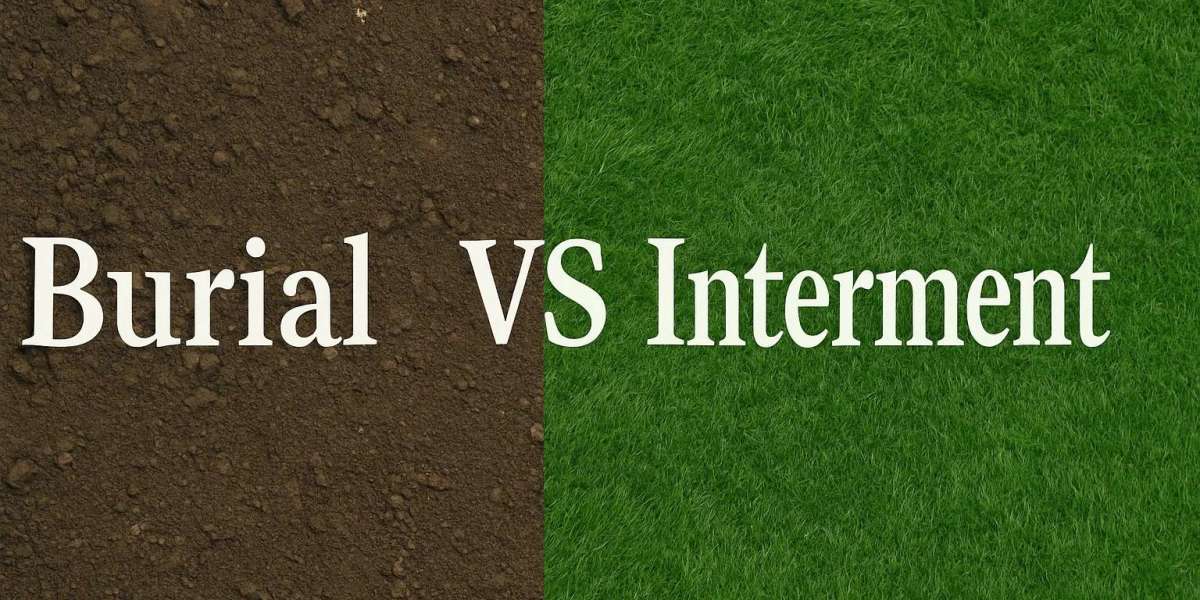What Does Burial Mean?
Burial is the process of placing a body in the ground after death. It typically involves:
- Placing the deceased in a casket or coffin
- Digging a grave in a cemetery or burial ground
- Covering the grave with soil
Burial has been practiced for centuries and is rooted in cultural, religious, and traditional beliefs. It is often accompanied by ceremonies or rituals, such as a funeral service or graveside service.
Burials are usually permanent and involve the use of a designated burial plot, which can be marked with a headstone or grave marker.
What Is Interment?
Interment refers to the act of placing human remains—whether a body or cremated ashes—into a final resting place. While burial is one form of interment, interment can include other methods, such as:
- Ground burial
- Placement in a crypt or mausoleum
- Inurnment of ashes in a columbarium
In other words, interment is a broader term that includes any dignified placement of remains in a permanent resting location.
Burial vs Interment: The Main Differences
Understanding Burial vs Interment comes down to recognizing that burial is a type of interment, but interment encompasses more than just burial.
Feature | Burial | Interment |
Definition | Placing a body in the ground | Placing remains in a final resting place |
Includes Ashes? | No | Yes (can include ashes from cremation) |
Common Methods | Ground burial only | Burial, mausoleum, crypt, or columbarium |
Term Specificity | More specific | More general or broad |
Religious Use | Often traditional or religious | Can apply to various cultural practices |
Why the Distinction Matters
Knowing the difference between burial and interment is important when making funeral or memorial decisions, especially when choosing between:
- Traditional Burial: Full-body ground burial with a headstone.
- Cremation with Inurnment: Placing ashes in an urn and interring them in a columbarium.
- Green Burial: An eco-friendly burial in a biodegradable container.
- Entombment: Placing the body in a mausoleum above ground.
Understanding your options can help you choose a method that aligns with personal beliefs, religious customs, or budget preferences.
Legal and Cemetery Considerations
Many cemeteries and legal documents use the term interment because it includes both burial and cremation. Interment rights refer to the legal permission to place remains in a plot or space within a cemetery.
When purchasing a cemetery plot or a niche in a columbarium, you may see "interment rights" or "interment fees" listed, regardless of whether the deceased will be buried or cremated.
Religious and Cultural Views
Different religions and cultures have their own interpretations of burial and interment:
- Christianity: Traditionally favors ground burial, though cremation with interment is now widely accepted.
- Judaism and Islam: Typically prefer ground burial and may not allow cremation.
- Hinduism and Buddhism: Favor cremation, with ashes either scattered or interred.
- Secular Preferences: May be more flexible and vary by personal values or environmental concerns.
Understanding these perspectives helps individuals and families choose the most respectful option.
Cremation and Interment of Ashes
Cremation has become increasingly popular in recent years. However, many people are unaware that the ashes also need a final resting place. This is where interment of ashes comes in.
Ashes can be interred in:
- Columbariums
- Burial plots
- Family graves
- Urn gardens
These options provide a dedicated space for remembrance and honor, much like a traditional burial site.
Final Thoughts
Choosing between burial vs interment is more than a vocabulary lesson—it’s a deeply personal decision. It involves your beliefs, your family’s wishes, and your budget. Knowing the difference ensures you can explore all available options and make the most appropriate choice.
Whether you opt for a traditional burial or the interment of cremated remains, the goal is the same: to provide a respectful, lasting tribute to the life of a loved one.
FAQs
Is burial the same as interment?
No, burial is one form of interment. Interment is a broader term that includes the placement of human remains in any final resting place, such as a grave, mausoleum, or columbarium.
Can cremated remains be buried?
Yes, cremated remains can be buried in a traditional grave, interred in a columbarium, or placed in an urn garden. This is also considered a form of interment.
What are interment rights?
Interment rights refer to the legal permission to bury or place remains in a specific cemetery plot, crypt, or niche. These rights are usually purchased from the cemetery.



